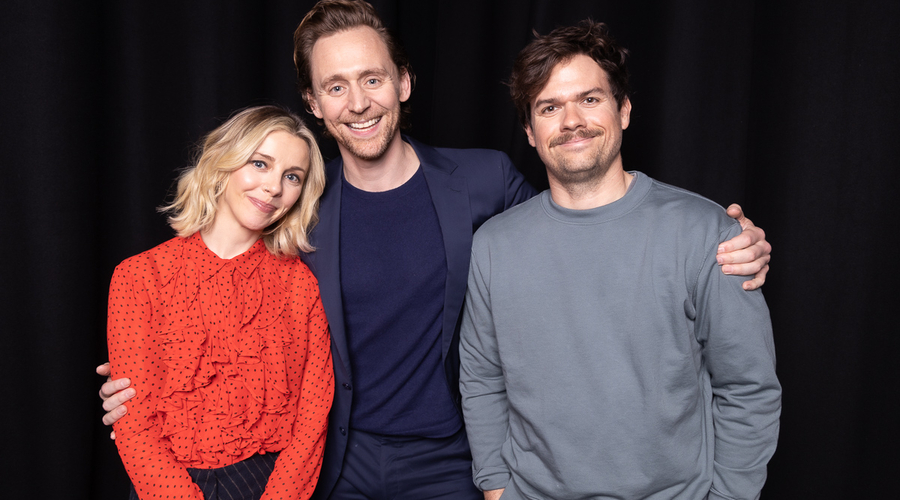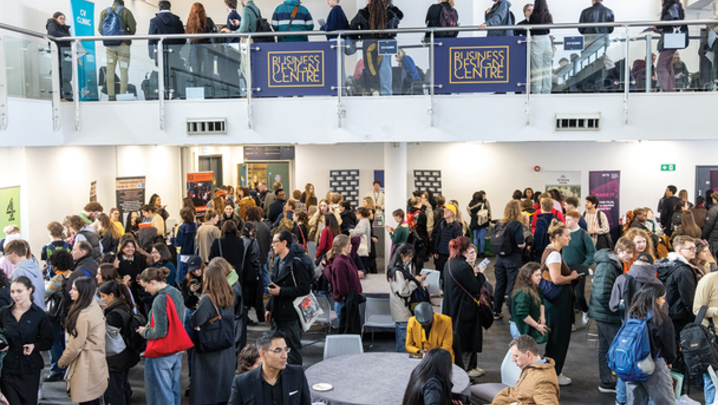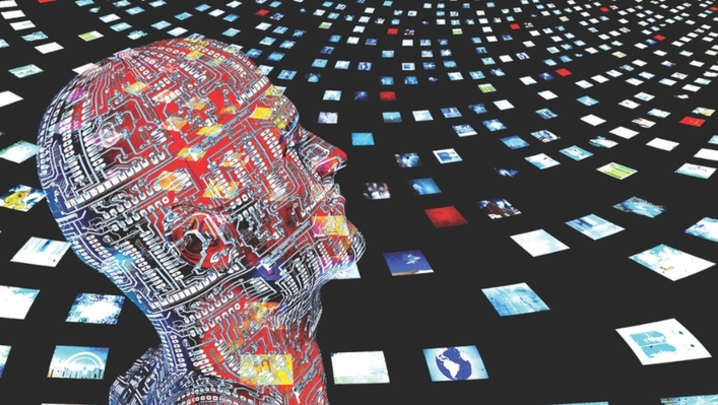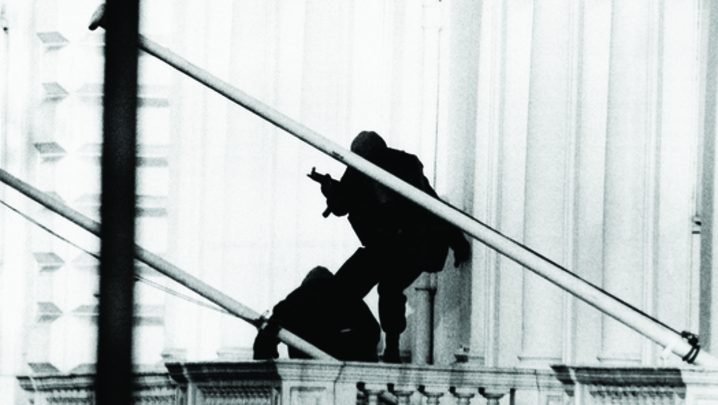A starry RTS event heard how the Marvel film character was adapted for a high-end TV series on Disney+.
Tom Hiddleston joined co-star Sophia Di Martino, series writer and executive producer Michael Waldron and director Kate Herron at a sold-out RTS event to share insights into their big-ticket Disney+ show Loki.
They discussed, among other things, the pressures of conjuring high-end TV for a streaming behemoth, pushing the envelope on content based on a character drawn from a blockbuster film franchise – and keeping legions of loyal fans happy.
Hiddleston, who has been playing Loki for more than a decade in the Marvel Cinematic Universe feature films, revealed how he was presented with the idea for a TV series spin-off four years ago, after Avengers: Endgame. “Michael [Waldron] and I were having breakfast a couple of years ago [after he’d] written the first pilot. We found ourselves talking about psychoanalytic theory and repetition compulsion and [the question of] whether you can ever change,” recalled Hiddleston, also an executive producer on Loki. “Is it possible for people to change? Even if you do, will people accept that you’ve changed? Is it possible to know yourself entirely?”
Loki features a variant of Hiddleston’s mischief-making Norse god in a series that is set after the events of the Avengers: Endgame movie.
Over six episodes of between 40 and 50 minutes, the show follows Loki as he is arrested by the Time Variance Authority (TVA) for creating a “branched timeline”, his subsequent investigation and his fights for variants, fates and futures.
Owen Wilson plays TVA agent Mobius. “Owen came on board and we realised we were in a police detective thriller,” said Hiddleston. “When I was cast as Loki, however many years ago, I never thought of this character as a detective. But he is here.”
With its elements of Franz Kafka’s The Trial, George Orwell’s 1984 and the other worldliness of sci-fi, time travel and apocalypse survival tales, Loki draws on literary and movie traditions, and on mythology. It even dares to pull off Hiddleston’s horns and armour, putting him in plain jumpsuits and, later, a collar and skinny tie.
To prepare, Hiddleston, who has a double first in classics, re-read The Trial and 1984 and watched Michael Radford’s feature adaptation of Orwell’s novel starring Richard Burton and John Hurt. He also reminded himself of the advice of Kenneth Branagh (with whom he made Thor in 2011) to base Loki on a cocktail of Shakespearean characters.
“It was like making three Marvel movies because we were filming so many hours of content at the same time,” said Herron, whose previous credits include Sex Education for Netflix. “I just didn’t think about it in terms of the massive scale, and just tried to tackle it day by day because it was such a mammoth task to get it done.”
Waldron said his work on cult adult animation Rick and Morty was helpful when it came to Loki, because he gained experience of “introducing big sci-fi concepts and explaining them to the audience…. We got to take a villain from an action movie franchise and have these dialogue-heavy scenes that feel like prestige television.” But Waldron, who has also penned the upcoming feature Doctor Strange in the Multiverse of Madness for Marvel, noted, “The harder, more human stuff is what you’ve got to work at, and that’s what makes it great.”
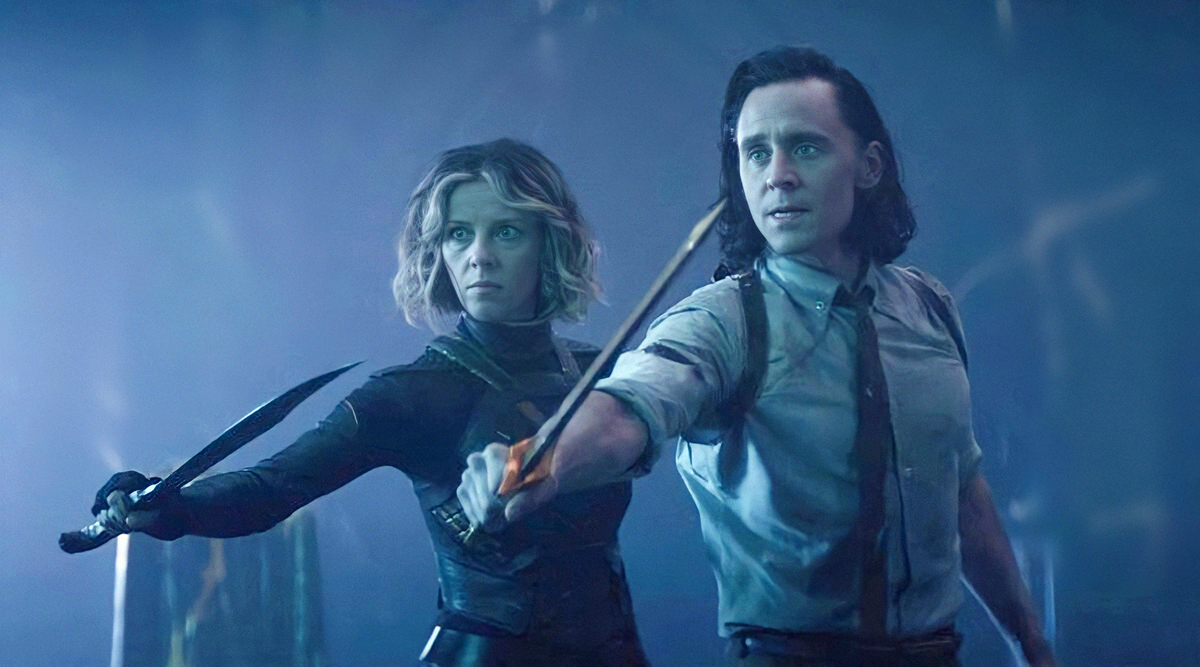
No expense was spared for Loki, reportedly bankrolled to feature-film levels. Production designer Kasra Farahani built oppressive, brutalist architecturally inspired sets with roofs to make the rooms smaller, and created corridors to film in.
“We were the envy of lots of the other Marvel projects because we had ceilings. These very oppressive ceilings are very unusual, because, normally, that’s where the lights are, and you can frame the ceiling,” noted Herron. “I love a long take and was thrilled we could do walking, talking heads up and down the corridors.” A whole town set was built in a circular plan from what looked like a “load of white polystyrene” during the day but, because it was daubed with UV and glow-in-the-dark paint, “came alive as soon as a night shoot started,” said Di Martino. Small details had a big impact.
UK-based Di Martino gave birth weeks before she embarked on the shoot, which required her to relocate (with her family, including a nursing baby) across the Atlantic. She worried about a potentially tricky conversation with costume designer Christine Wada when she arrived. Wada, however, allayed her fears and designed a costume with a lot of Velcro and zips so it was practical and comfortable for a new mother and a character who is “a brawler and a survivor who has been through hell and back and survived apocalypses,” said Di Martino. “I could pump and breast feed, we just made the costume super practical, and I didn’t have to take it all off to go to the loo.”
Herron said she noticed on set that Hiddleston danced around a lot – “he’s very musical” – and used Natalie Holt’s score to help choreograph some of the longer scenes.
Whenever there was any doubt about whether details of the storyline were consistent with events elsewhere in the Marvel multiverse, Waldron, Hiddleston and Herron relied on co-executive producer Kevin R Wright and Marvel Studios chief Kevin Feige to keep it all on track.
The series was scheduled to film for 18 weeks in Atlanta, Georgia, from January 2020. Six weeks in, production was shut down because of Covid and resumed in September 2020, finishing in December that year. During the shutdown, Waldron and his writing team “had time to refine” the two final episodes. This period also gave Herron time in edit to note what was clicking and working on screen.
The quarantine-bubbled cast and director held “watch parties”, which included James Cameron’s Titanic, which added to the camaraderie. They also helped to alleviate the pressures of being quarantined and working on such a high-profile standalone show.
“For those of us in the engine room, when it comes to those pressures, you just keep going at a pace that feels manageable, so that things are made and considered and created with integrity,” said Hiddleston. “That’s the way Kevin [Feige] runs Marvel Studios. He is very, very careful about the detail, like any creative, and doesn’t rush it.”
Report by Stuart Kemp. The RTS members event ‘Loki: Behind the scenes’ was held on 2 March at Kings Place, London, and was hosted by film critic and broadcaster Rhianna Dhillon.

